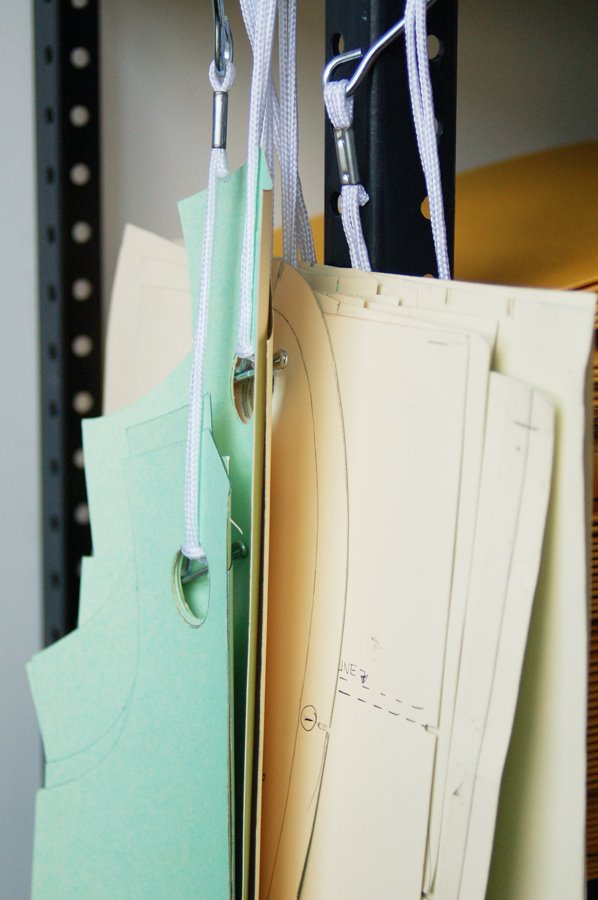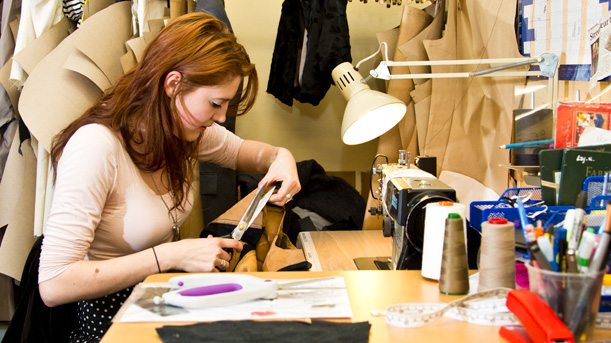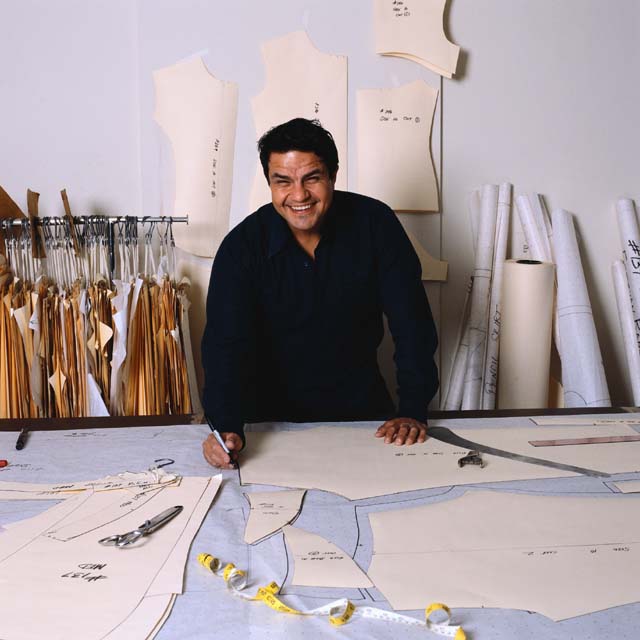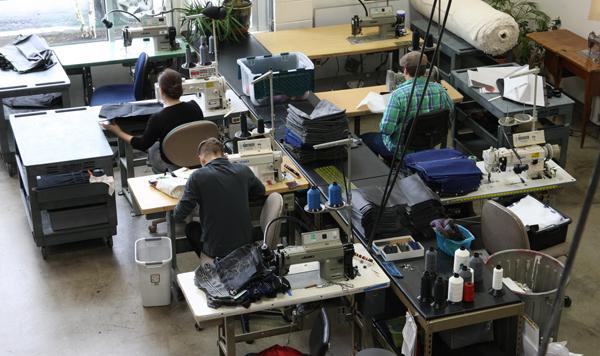Working With Pattern and Sample Makers

Overview of the Apparel Production Process
December 26, 2011
Who Should Make Your Patterns?
March 2, 2012The fashion industry is notoriously complex and challenging to navigate, especially if you are a small scale independent designer who has to learn the ins and outs of the development and manufacturing process as you go along.
Many designers get to a point where they realize that outside help and professional experience is necessary when it comes to developing quality patterns and samples. But, all too often, designers have a difficult time establishing a working relationship with quality service providers, either because they don’t know how to find the professionals in the first place and instead end up wasting time and money on a home sewer from Craigslist who doesn’t know a thing about manufacturing, or because they approach technical service providers before they’ve spent enough time developing their ideas into a workable plan and subsequently either get turned away or shocked by a high quote for services that blows their budget out of the water.
The reality is, this is an industry in crisis. Truly skilled technical professionals are a minority these days, overshadowed by all the people who want to be designers but don’t know much about how to pattern and sew a garment. Many new designers don’t understand all the necessary details that have to be communicated to a pattern maker (seam types, interfacings, finishes, closures, sizing, etc.) before their ideas can be translated into a manufacturable product that at least somewhat resembles what they envisioned, yet they often wonder why they can’t find someone who actually wants their business.
These days, pattern makers are having to spend significantly more time requesting information and direction from designers who don’t yet understand all the details that they are responsible to provide (or else need to pay for someone to develop), thus pattern makers are spending less time on their specialty of making patterns and consulting is essentially becoming a requirement for most new designers.
The current shortage of skilled professionals is making it even more challenging to find technicians who have the time and interest in taking on new clients, as many of them are already busy with established clients who provide them with regular work without as many potential headaches and inefficiencies as a newbie client typically presents. Emerging designers have to understand that when these technicians meet with new clients, they are often interviewing the designer to determine how much time they will have to invest in building a foundation with the client in order to develop a productive working relationship – a risk that often doesn’t pay off, as designers who are tenacious and successful enough to produce another season are greatly outnumbered by the ones who blow all their money in the first season and are out of business before they even get established.
In other words, unless you’ve done extensive research and preparation before you embark down the road to produce a clothing line, expect to pay extra while you’re getting started to have someone hold your hand through the process. You also have to realize that many designers don’t make a profit until they are a couple of years into establishing their brand, especially if they have to outsource most of the work vs. being capable of doing most of the initial development and manufacturing themselves. If you are still passionate and committed to investing the time and resources that are required to pursue the path of a designer entrepreneur at this point, then you probably have what it takes to make it in this business. It’s a lot of work and requires a high level of commitment to learning.
Planning and preparation is key to developing a quality product. Part of this involves budgeting adequately for all the costs that arise in producing a product or fashion line. It cannot be stressed enough that you have to treat this like a business, not a hobby, and the percentage of time you’ll spend designing is realistically less than 15%. So if you want to spend most of your time designing, you’re probably better off getting a job as a designer vs. embarking down the path of the designer entrepreneur.
If you’ve gotten this far and still want to know what a designer entrepreneur can do to prepare for working with pattern and sample makers, then here’s a list:
Some key points that will need to be covered during development:
- Define your target customer and research comparable brands in the market
- Determine price points
- Define dimensions of sizing
- Source fabrics, trims, and other inputs
- Provide working technical sketches prior to pattern and sample making
- Provide seam detail information
- Create a spec sheet / technical package
- Do product costing
Note: Some contractors will offer services to help designers develop these for an additional fee but many do not, as these details generally require significant direction from the designer and are beyond the scope of what a pattern or sample maker is expected to provide. These technicians typically expect this information to be clearly outlined and communicated from the start, with the exception of technical spec sheets and costing information, which should be fleshed out during the development process.
If an existing sample will be used as the basis of the style, the exact specimen garment (in the desired sample size) is often required. Other garments that illustrate desired seam, style, or fit details are also helpful so the pattern maker can get a better idea of how you want your garment to look and function. Keep in mind that the more detailed your garment is, the higher your overall costs will be in development and production. A good pattern maker should be able to work with you to revise your design to fit your target retail price point (within reason).
The technical specs should include the following:
- Detailed flat sketch with front and back views (e.g. callouts for topstitching, placement of contrast fabrications, hem and band widths, label placement…)
- Any special directions for fabric direction or matching (e.g. cross grain, border print, napped fabric, etc.)
- Seam allowances, topstitching, stitch length, thread color and type
- Samples of selected fabric and trims attached plus any stretch or shrink test results. Indicate clearly what is Self, Contrast, Trim, and Lining.
You should also provide a pattern maker with the following information:
- Fit model body measurements – typically an average medium size based on your target customer; grading up and down from a middle point will minimize fit issues in other sizes.
- Size range (or, competitor’s sizing information)
- Your company’s pattern reference number (i.e. style number). Style names alone are not sufficient and can lead to confusion.
If a designer can do their homework and either provide all of this information themselves or at least be willing to spend the time and money working with a professional to develop working technical specifications, they will find service providers who are pleasantly surprised at their level of preparation and will be far more willing to take them on as clients.
Follow the links provided throughout this article for a more in depth explanation of a number of critical points that a designer must understand in order to facilitate a relatively smooth development process.
You can also accelerate the learning curve by reading books that are geared towards indie startups. I highly recommend Fashion For Profit and The Designer Entrepreneur’s Guide to Sewn Product Manufacturing for starters. The time and money you spend on these books will potentially save you hundreds or thousands of dollars in expensive mistakes and could be one of the most important business investments you make from the start.





3 Comments
What a fantastic article. I agree withe everything here. I own a pattern making, sample making, grading,specification service in Melbourne Australia. We work with a lot of start ups who have great ideas but do not know the amount of work and detail that must go into a range. We enjoy the enthusiasm of the start ups although our favorite customers are those who have been in business for a few years, understand their customer and their designs. We will bend over backwards for them as they appreciate the service we provide and understand the costs involved. I will be passing this link onto all of my start up enquirers. Thank you, you have just made my job a little bit easier.
This is truly a wonderful article! I could not agree more. I work professionally as a techical designer in the apparel industry and everyday deal with tech packages, sketching and being VERY detail oriented in order to ensure an overall quality product. Thank you so much for laying all this out as it needs to be 🙂 I look forward to reading more from you and am sooo excited you are based in CO!
[…] out Jessica Montoya’s blog on why it may be hard for you to find a […]